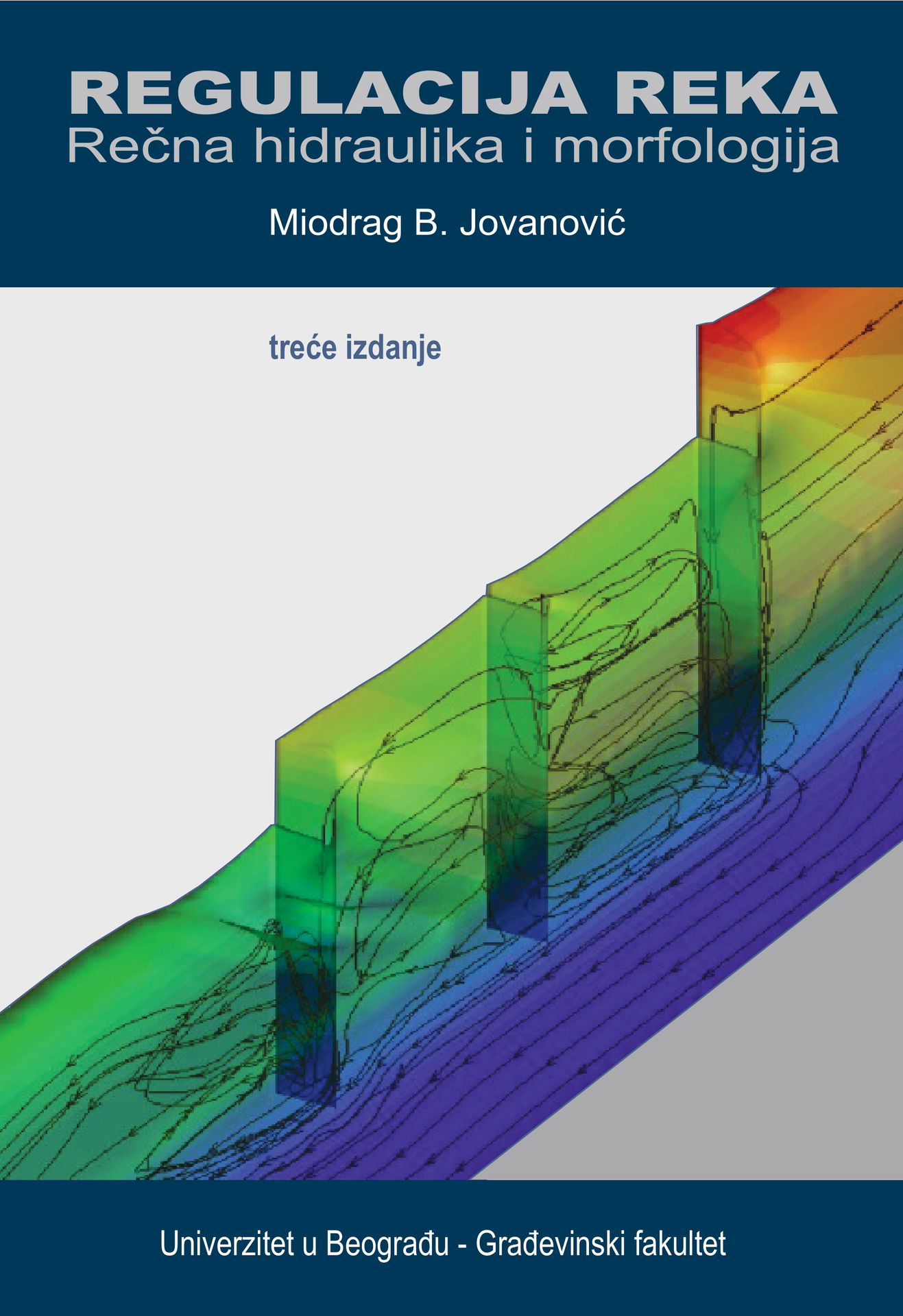Book
River hydraulics and morphology
M. Jovanović

M. Jovanović
RIVER ENGINEERING
River hydraulics and morphology
- third edition -
(in Serbian)
Faculty of Civil Engineering
Belgrade, 1998.
ISBN 978-86-7518-215-3
Pages: 496
About the book:
The hydraulic engineering is nowadays more and more branching into two complementary professions - "hydro-informatics specialists" who are deve-loping numerical methods and crea-ting complex computer codes, and "hydraulic engineers" who are solving practical problems. As a consequence, the former professionals are more and more lacking the opportunity of practical experience, while the latter ones are becoming increasingly defi-cient in theoretical knowledge. This book by prof. M. Jovanovic has the quality to equally address both cate-gories of river engineering experts: to present and future "hydroinformatics people" it gives the rationale behind the technical task to be accomplished, while to the "practicing engineers" it clarifies theoretical principles behind numerical methods used in hydro-informatics. This approach is not only significant at the present moment, but will certainly became crucial in the years to come...
Prof. Stevan Bruk
List of codes
Contents:
Preface to the first edition
Preface to the second edition
Preface to the third edition
1. Geomorphological characteristics of rivers
2. Concluding remarks
3. Frictional resistance in fixed-bed channels
4. Resistance in movable-bed channels
5. Unsteady flow in natural watercourses
6. Steady flow in natural watercourses
7. Secondary flows
8. Origin and physical properties of river sediments
9. Incipient motion of sediments
10. Bedload
11. Suspended and total sediment load
12. River bed deformation
13. River hydraulic models
14. River channel morphological analyses
Literature
Appendix A: List of computer codes
Appendix B: Physical properties of water
Appendix C: Settling velocity of sediment particles
Appendix D: Standard normal distribution values
Appendix E: Expressions for hydraulic model scales
Author index
Subject index